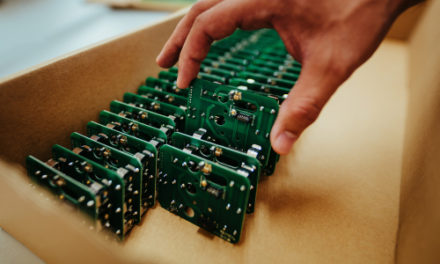Component Shortages and Long Lead-Times Create Perfect Storm for Counterfeiters

By Dr. Bill Cardoso, Creative Electron
I read with interest ‘How to Survive the Ongoing Component Shortage’ on EMSNOW this week. This was not news, we have been hearing about component shortages for some months now and it was always going to be a challenge for 2018, but with these long lead-times comes another problem, that of counterfeit components.
Those involved in the counterfeit component market love nothing more than device scarcity and panic. This scarcity drives purchasers to look to alternative sources and take risks that they wouldn’t normally take. That in turn requires a greater level of diligence from the buyer and the incoming inspection team to mitigate risk wherever possible.
But before we get on to how to combat the counterfeiters, let’s take a quick look at why the component supply and demand cycle is in sync with that of the fakers. Oversupply and shortages are a natural phenomenon in any market with variability in demand. Put simply, in times of poor performance, capacity goes down and when supply picks up that supply reacts slowly to increased demand. Hence, we have a cycle of over and under supply. In oversupply periods we see high inventory, lower prices and immediate availability. In undersupply periods we see long lead-times, like now when they have reached 30-weeks in some cases, higher prices as people cash in on scarcity, and worryingly, but perhaps unsurprisingly, a big spike in counterfeit activity.
The counterfeit market is complex and hard to spot in many cases. It will not just be shipments of entirely fake components; sometimes fakes are shipped together with good components to bolster quantity. These could sit on a reel in stores for a long time, creating a latent risk for future projects. For that reason, the counterfeiters need to be attacked at the point of purchase and delivery.
Beware of Supply Chain Disruption
In times of shortage there may well be no choice but to go outside the normal AVL (Approved Vendor List) to keep production flowing. Whilst this is fine, it does mean auditing that new vendor quickly and making sure the products shipped are inspected in a different way to those from the distributors normally relied upon. For this reason, anyone who previously only purchased from two or three very large distributors, and relied on them for counterfeit protection, now needs to have their own anti-counterfeit strategy.
Designing a Counterfeit Strategy
To be frank, everyone should have one. The counterfeit market is growing every year and the number of unspotted fakes finding their way into products is alarming. They are not just expensive, they are dangerous!
Deterrent and Detection
Everyone buying components needs to have a strategy to ensure they are buying the real thing. Without going into too much detail, this needs to be done at the supply chain or purchasing point and again at the goods in inspection and use point. I recently wrote a piece for EBN based on a presentation I have delivered in the past, entitled ‘10 Ways X-Ray Can Help Identify Counterfeit Parts’, which recommends help with counterfeit detection and what to look out for.
Now, more than any other time, it is essential to have a policy and strategy for counterfeits in place. The risks are abundant, as is the profit for the unscrupulous organization that will take advantage of any supply chain shortages or panic in the market.












